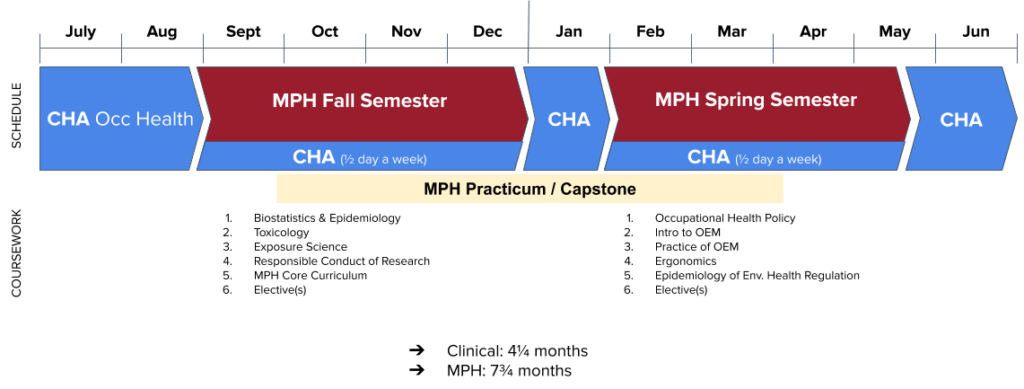Occupational and Environmental Medicine Residency Program
The Occupational and Environmental Residency is an accredited, two-year training program for physicians, leading to board certification eligibility in occupational and environmental medicine.
665 Huntington Avenue
Building 1, Room 1404
Boston, MA 02115
Residency Program
Residency Program Pathways
We offer two pathways to Board Certification in Occupational Medicine: a 2-year Categorical Program and a 1-year Complementary Pathway, and we strongly encourage those from underrepresented and military backgrounds to apply. Race and ethnicity will not be considered in the selection process.
The Categorical Program can be entered after a transitional internship or a full clinical residency, such as internal medicine. The Categorical Program requires two full years of training beginning each year on July 1. The first year consists of two semesters of full-time didactic coursework at Harvard Chan leading up to the Master of Public Health degree with a concentration in occupational and environmental health by June of the following year. Please click here for details regarding the Harvard Chan 45-credit MPH degree.
The Complementary Pathway is available to those who already hold other board certifications and have at least two years of career experience in OEM. For additional information about the Complementary Pathway, please contact us directly.
Categorical Program
The MPH coursework — undertaken from September to December and February to May — is complemented by continuity clinic in the same months. Residents also complete clinical rotations in July, August, January, and June of their first year and begin to plan a research project with the guidance of OEMR faculty members. Students who already hold an MPH degree attend courses as special students as needed to supplement their degree.
Sample first-year schedule:

The second year consists of clinical and administrative rotations in various settings, including sites at:
- Cambridge Health Alliance
- Occupational and Environmental Health Network (OEHN)
- Veterans Administration-Boston Health Care
- Tufts Medical Center Traveler’s Health Clinic
- MIT Environmental Health Services
- Massachusetts Department of Public Health
Elective rotations are available from other government agencies, such as the National Institute for Occupational Safety and Health (NIOSH) and the Occupational Safety and Health Administration (OSHA).
Sample second-year schedule:

The second year also involves the completion of a research project of publishable quality.
During both years, OEM residents attend Grand Rounds, career and research seminars, and weekly Board Review sessions. Second-year residents are responsible for conducting Grand Rounds with area experts in occupational and environmental medicine. They also have opportunities to attend regional and national occupational health scientific meetings.
The OEMR has a strong track record of residents producing excellence in research. Since 2000, Harvard Chan OEM residents have won a total of 21 ACOEM research awards and have spoken on the podium at 12 of the last 15 AOHC meetings. Since 2005, Harvard Chan OEM residents have authored/co-authored over 50 publications resulting from their training.
Other unique opportunities for OEM residents include the Harvard Chan Initiative for Productivity and Health Management (IPHM). Productivity and Health Management seeks to maximize the health of the workforce and its dependents for the mutual benefit of employees and their employers. The emerging field recognizes the interrelation of employees’ health and well-being with employee satisfaction and an enterprise’s healthcare costs affected by all of the following: healthcare expenses, absenteeism, disability, turnover, and productivity. The Harvard Chan IPHM, housed within the OEMR, has held two successful conferences related to these issues, one in 2010 and one in 2012. Residents attend IPHM Conferences as an integral part of their training and have the opportunity to network with the conference faculty and attendees, who are international thought leaders in a variety of fields. For more information about the IPHM, please click here.